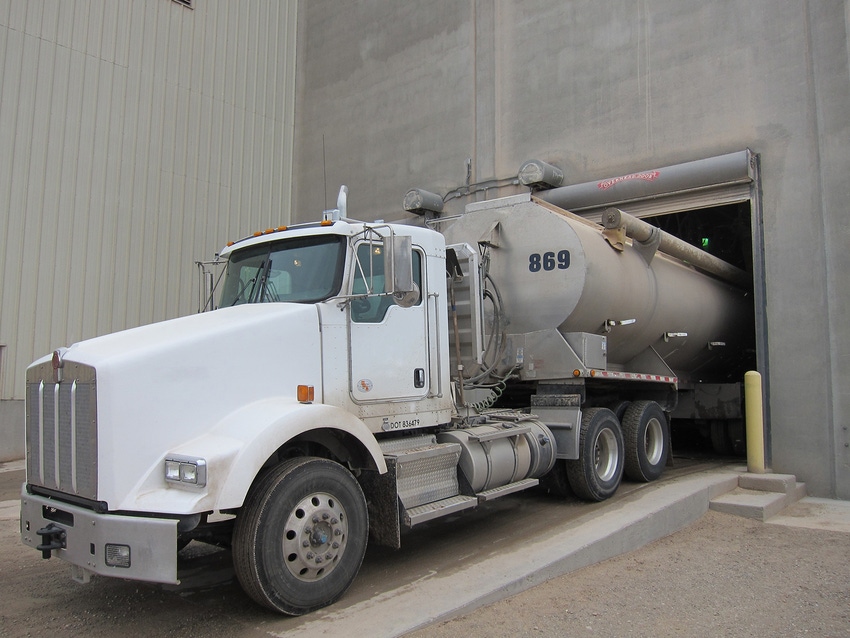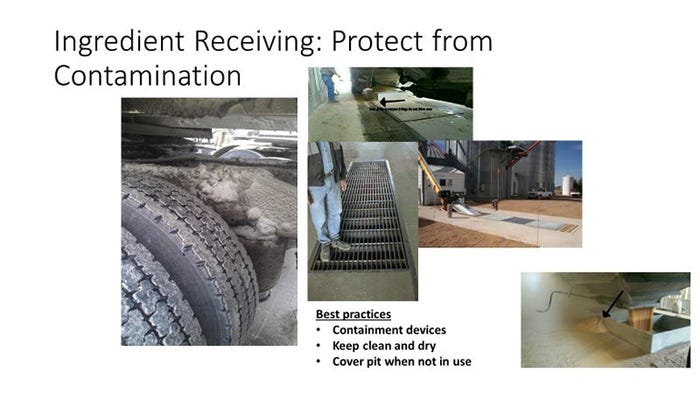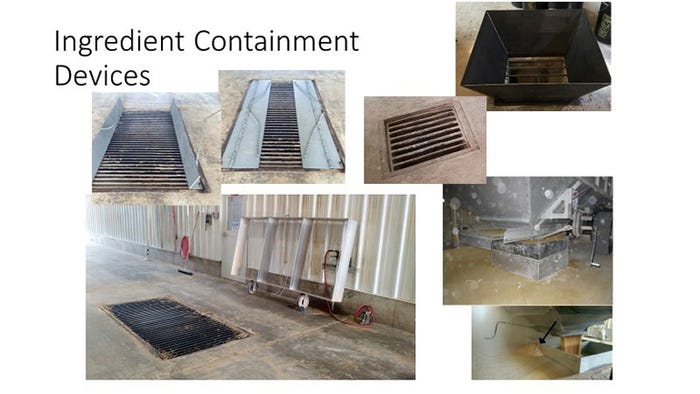Some of the best practices Hanson has seen mills incorporate have involved containing ingredients to the pit, not allowing for overflow and covering the pit when not in use.

Each year, six times more feed is produced in the United States for finishers versus sows, raising the question: Is there a higher risk of contamination via feed for finishing? While biosecurity for boar and sow feed mills can be very strict, finisher feed mills are often much more lenient.
“We all understand there’s more of an economic impact if there is a disease break on a sow farm, but [to protect the industry] we may need to consider feed mill biosecurity for finishing pigs,” says Andrea Hanson, system nutritionist with Professional Swine Management, Carthage System. “In my experience, we’ve really focused a lot as an industry on biosecurity for mills that are servicing boar studs and sow farms, but we need to expand our horizons.”
Hanson, who has been with the Carthage System for three years, is responsible for formulation and nutrition programs for PSM-managed farms across 17 different toll mills and has seen firsthand some of the potential risks for contamination. One of the greatest threats for local contamination comes from the ingredient receiving area, Hanson says. Many mills have ingredient receiving grates that are flush with the floor and not covered.

“Contaminating this area with our shoes, truck tires and road sludge, and allowing birds to form a habitat there can be a severe issue and a threat for feed biosecurity,” Hanson says.
Some of the best practices Hanson has seen mills incorporate have involved containing ingredients to the pit, not allowing for overflow and covering the pit when not in use. Some mills she works with have put in containment devices that fold flush with the floor and close when not in use, while others have welded removable funnel devices to contain ingredient flow. One of the mills in the Carthage System has developed biosecurity flaps that open when needed to receive ingredients and close when not needed. Such devices help reduce overflow by containing the ingredient to the pit and reducing contact with the areas driven over by truck tires.

“If you can’t use those containment devices, it’s important to keep the area around the pit clean and dry. It’s a really hard to do, with winters in Illinois, but it may be important to remove the sludge on those high risky winter days,” Hanson says. “We know that it’s not like this every day in the winter in Illinois, but when it is, we can take some approaches to mitigate risk and then design the pits so that the truck tires don’t have to drive over them, and discourage people from walking over those pits.”
Another strategy Hanson encourages her feed mills to incorporate is for all personnel to treat the mill as a “clean” area, which includes:
Separating drivers from feed mill personnel and manufacturing.
Using disinfectant mats and cleaning the areas of cross traffic regularly.
Making sure traffic flow is clearly defined with visible signage.
Defining the area to receive paperwork and not giving drivers direct access to the mill.
Keeping all ingredient drivers in a receiving area. Consider implementing a locked door, code access policy with a phone available to call the mill if drivers have any problems.
“Also, if you’re going to have visitors in a mill, having a logbook that asks about the last known pig contact is also important because it starts a dialogue about biosecurity, about overnight downtime, but not many mills are asking those kinds of questions,” Hanson says.
On the feed delivery side, Hanson says it is crucial to establish a strict biosecurity pyramid for all sites. At the 22 sites that are fed out of the mill at Carthage, a stringent biosecurity pyramid is in place. Trucks only travel from high health sites to unhealthy sites, clean to dirty essentially, and then the trucks must be washed, baked and disinfected before moving up in the system for deliveries.
“Not all mills have that opportunity, but it’s important to have that dialogue to understand what is possible and communicate regularly with the mill on health status of pigs. Fortunately, we have a fairly direct line of communication with all of our mills,” Hanson says.
The Carthage System has also implemented strict biosecurity and sanitation guidelines for truck drivers, including using disposable booties or wearing sanitized shoes when they’re on the farm. Hanson says a good reporting process is also essential. If drivers have to leave a farm with a bin lid open, they can call that in.
“There’s all sorts of biosecurity concerns such as raccoons or birds getting into feed bins, and those can be disease risks as well,” Hanson says.
While these extra biosecurity measures Carthage has deployed throughout their feed mill system have been working, Hanson says it’s important to remember that there isn’t just a one-size-fits-all solution.
“We can’t just write a rule book and say it’s going to work everywhere. It’s important to understand, what your situation is and develop some solutions that really work for your situation,” Hanson says. “Working with a wide variety of toll mills like I do, I understand there’s a wide variety of backgrounds and education levels in terms of what folks know about feed mill biosecurity. I think as producers, we have a responsibility to educate our mills on why we’re having them do what we’re asking them to do, so they understand why it’s so important. Education and connecting mills with usable resources will promote adoption and execution.”
About the Author(s)
You May Also Like





